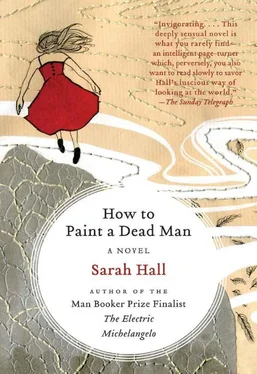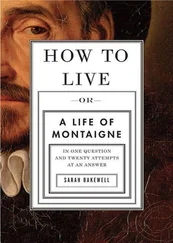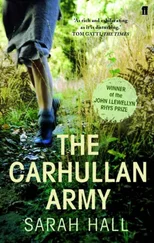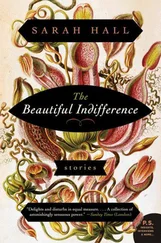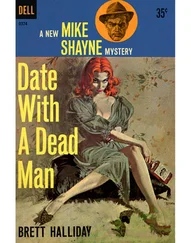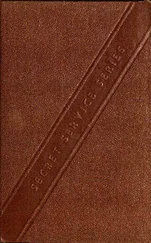Sarah Hall - How to Paint a Dead Man
Здесь есть возможность читать онлайн «Sarah Hall - How to Paint a Dead Man» весь текст электронной книги совершенно бесплатно (целиком полную версию без сокращений). В некоторых случаях можно слушать аудио, скачать через торрент в формате fb2 и присутствует краткое содержание. Год выпуска: 2009, Издательство: Harper Perennial, Жанр: Современная проза, на английском языке. Описание произведения, (предисловие) а так же отзывы посетителей доступны на портале библиотеки ЛибКат.
- Название:How to Paint a Dead Man
- Автор:
- Издательство:Harper Perennial
- Жанр:
- Год:2009
- ISBN:нет данных
- Рейтинг книги:4 / 5. Голосов: 1
-
Избранное:Добавить в избранное
- Отзывы:
-
Ваша оценка:
- 80
- 1
- 2
- 3
- 4
- 5
How to Paint a Dead Man: краткое содержание, описание и аннотация
Предлагаем к чтению аннотацию, описание, краткое содержание или предисловие (зависит от того, что написал сам автор книги «How to Paint a Dead Man»). Если вы не нашли необходимую информацию о книге — напишите в комментариях, мы постараемся отыскать её.
, Sarah Hall, "one of the most significant and exciting of Britain's young novelists" (
), delivers "a maddeningly enticing read... an amazing feat of literary engineering" (
).
How to Paint a Dead Man — читать онлайн бесплатно полную книгу (весь текст) целиком
Ниже представлен текст книги, разбитый по страницам. Система сохранения места последней прочитанной страницы, позволяет с удобством читать онлайн бесплатно книгу «How to Paint a Dead Man», без необходимости каждый раз заново искать на чём Вы остановились. Поставьте закладку, и сможете в любой момент перейти на страницу, на которой закончили чтение.
Интервал:
Закладка:
‘He’s waterproof. He’ll always be here.’
Beside the other photographs are jugs of wine and oil. Brooms of sage have been burned, and incense cones. Someone has left a candle flickering, its waxy taper studded with cloves. There is a Polaroid picture of a new baby, Tommaso reports, after his customary detective tour of the cimitero; its tiny feet and hands, he says, are bumpy and curled like cabbage leaves. Annette runs her fingers around the stonework. She pulls small weeds and mosses from the crevices. Tommaso has begun building a pyramid with pebbles on the flat rim of the monument. ‘You’re giving Papa a shave,’ he says. There is a small china statue of the Madonna, which has fallen over on to its face. ‘She’s looking pale,’ says Tommaso. ‘Has she seen a ghost?’ The sun has bleached the Madonna’s robes to ivory, like an old wedding-cake ornament. Annette blows the dust and dirt from the creases, rubs her clean with a wetted finger, and stands her upright again.
She wonders if her father misses them. She wonders if he misses the flowers he used to grow and the rooms of Castrabecco. She chats to him as she administers to the niche. ‘Uncle Marcello says business is reasonable. Poppies should come up next week in the fields. Uncle Marcello says some people believe if you look at a poppy without making the sign of the cross it will make you go blind. Do you believe it, Papa?’ Tommaso drops the last pebble, his arm at full stretch, and the little pyramid collapses. ‘Is that what you did, Annette?’ She shakes her head. ‘I can still see some things.’
‘But you can’t find the edges,’ he says.
She smiles. ‘Yes. I can. I can find yours,’ and she tickles him until he squeals.
It is true that she does not often take anyone’s arm. She can remember all the routes to and from the familiar places; they exist as remembered geometries, blue lines in her mind. She can still see light, sometimes colour, sometimes movement. It is like occasional weather inside her head. ‘Uncle Marcello is having trouble with the greenfly again,’ she tells the photograph. ‘He wishes you were here to consult. He doesn’t want to use chemicals. He says chemicals are barbaric. But the vinegar isn’t working any more. He says they even seem to like it. He says he’s going to cause a drought in Modena.’
Tommaso has wandered back out of the enclosure. He is looking for small wildflowers with which to make a necklace. His school teacher has shown him how to split the stems in the middle to make an eyelet, through which another stalk can be fed, and then another, and another, until the chain is long enough to pass over his head, and he can crown himself prince of the forest. It must be placed tenderly around the neck without breaking any of the frail clasps.
After attending to her father, Annette crosses the cimitero to visit the chamber of Signor Giorgio. She empties the tall bottle on the carved shelf and into it she slips two stems. There are seldom other offerings left for him, no candles, no wines, though once Tommaso said he saw an old woman weeping as she left the crypt. There is a plaque on the wall that commemorates him as an artist of great importance.
When the artist first came to the school, Signora Russo told them that he was very respected, and they were fortunate to be able to share his generosity and his intellect. Their parents would of course know of him and his famous still-life paintings. She said that he was not an advocate of brutality, as some newspapers had suggested, and they were not to talk about the rumours in his presence. In the classroom the other children would bend over their drawings and constantly ask him questions, inviting him to look at what they had produced. ‘Signor Giorgio, how do I clean the brushes? Tipped down or tipped up, which way is correct? Signor Giorgio, look at my work. I have copied this stone to make a mountain like Cennino Cennini instructs us. Signor Giorgio, how old you are! How white your hair is! Are you as old as Michelangelo? We can hear you breathing like a winter sheep!’ And with his good humour and patience their tutor would laugh, a broken coughing laugh, and he would answer their questions and instruct them again how to make solidifying dots or modelling gesso, how to animate limbs and how to dry brushes. Annette did not solicit his attention but instead waited for him to make his way around the room to her. If the weather was good, he took them on field trips, where they would search for useful tools and find shapes to study. Sometimes he held her hand.
Every week he told them secrets about the glorious nature of art; then he said these were not secrets after all because everyone with an inquiring disposition and a desire to be an artist was entitled to know them. And he set them a task with the pencils, and a task with the ink, and he went to each child and watched them work and asked questions about the picture they were making. He listened very carefully as they answered. When he arrived at Annette’s station, she would put her brush aside and turn towards him, giving him her full attention. He was very tall. His trousers rode up above his ankles. There was often a rushing sound in his chest, like the sea in a shell, and his breath was gamey, like lamb fat. She didn’t mind because he was very encouraging. His compliments made heat spill into her cheeks and rash her neck.
He told Annette he liked her paintings of the flowers she had brought from Castrabecco best of all. He told her the flowers in her paintings contained exactly the purple substance of the flowers on the desk in front of her. He said he could even detect the fragrance of the paintings from the other side of the room. ‘Such a remarkable waft of begonias,’ he would say, ‘I felt we must have been overtaken by them while my back was turned talking to Sandro. Let us open the window and see if your painting can entice the butterflies.’
Once he asked if her eye condition brought any discomfort. She told him her eyes felt quite comfortable ordinarily. They were snowy and sore from time to time, and her back hurt when she had to bend over the page to concentrate on joining her letters together properly. It was almost no longer possible for her to read the books given to them for recitation, she said, and her recitation was slower than everyone else’s and sometimes she did not recite at all. One day in the future she would be blind, she told him. Her family had been forewarned, it was expected. Signor Giorgio sighed deeply, and gently put a hand on her shoulder. ‘You are an illumination,’ he said. It was then that he told her about the mind’s eye. He said that between the articles of reality and their depiction lay an invisible place, which was filled with as many things as could be seen in the visual world and more. This was the place to which Annette could go when her sight eventually failed her. She could go there to see her beautiful flowers. He said that, in the history of art, painted flowers were treasures that defied time.
He sat with her a long time that afternoon. He told her about the artists of Holland who had created fanciful bouquets from their imaginations, with pineapples and quinces, the bounty of the different seasons combined together. In these paintings there would often be something sinister and cautionary in the corner, a little unpleasant danger, like a fly walking towards an apple, a snail on the lip of a jug, or some mould or blemish on the rind of a clementine. This was called symbolism. ‘It is like life,’ he said. ‘All things desist. All things are temporary.’ The Dutch artists were conveying the truth about nature, and reminding everyone that life was short, even while their paintings were impossibly artificial.
The next week he brought a large picture book with a canvas cover, full of the impossible paintings. He also brought a magnifying glass with a horn handle, which expanded the image beneath and lifted it from the page. She studied the images carefully. On one page there was a still-life picture with a bird about to peck at a fig. Signor Giorgio told her that such works contained many messages. Though everything seemed captured and held in a single chosen moment, the world beyond could be seen, endlessly. For example — he turned the page — there, could she see it? In the glass vase holding the pale pink rose was reflected the artist’s window, which was a window showing what was outside his studio. ‘Can you see?’ he asked, and Annette bent close until she could make out the four squares of light in the perfect glass.
Читать дальшеИнтервал:
Закладка:
Похожие книги на «How to Paint a Dead Man»
Представляем Вашему вниманию похожие книги на «How to Paint a Dead Man» списком для выбора. Мы отобрали схожую по названию и смыслу литературу в надежде предоставить читателям больше вариантов отыскать новые, интересные, ещё непрочитанные произведения.
Обсуждение, отзывы о книге «How to Paint a Dead Man» и просто собственные мнения читателей. Оставьте ваши комментарии, напишите, что Вы думаете о произведении, его смысле или главных героях. Укажите что конкретно понравилось, а что нет, и почему Вы так считаете.
